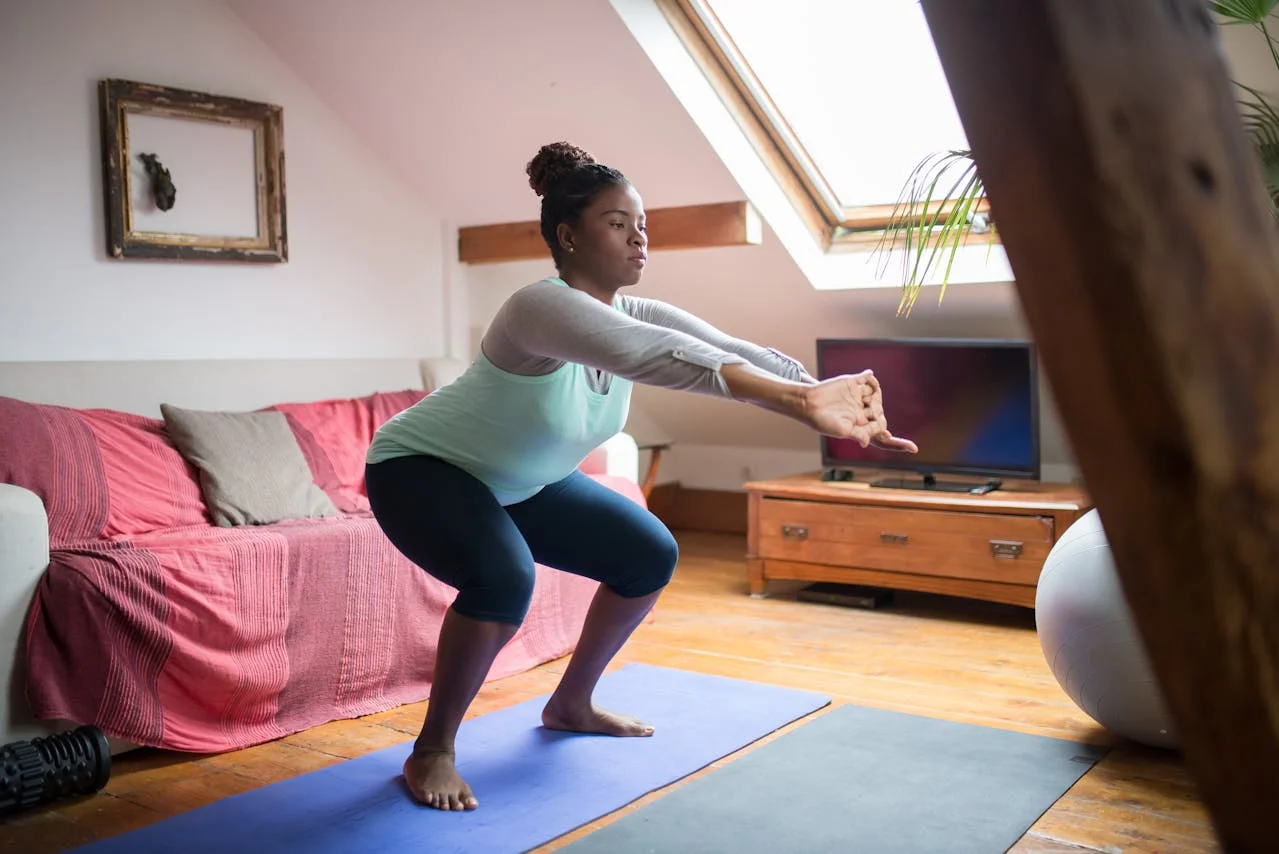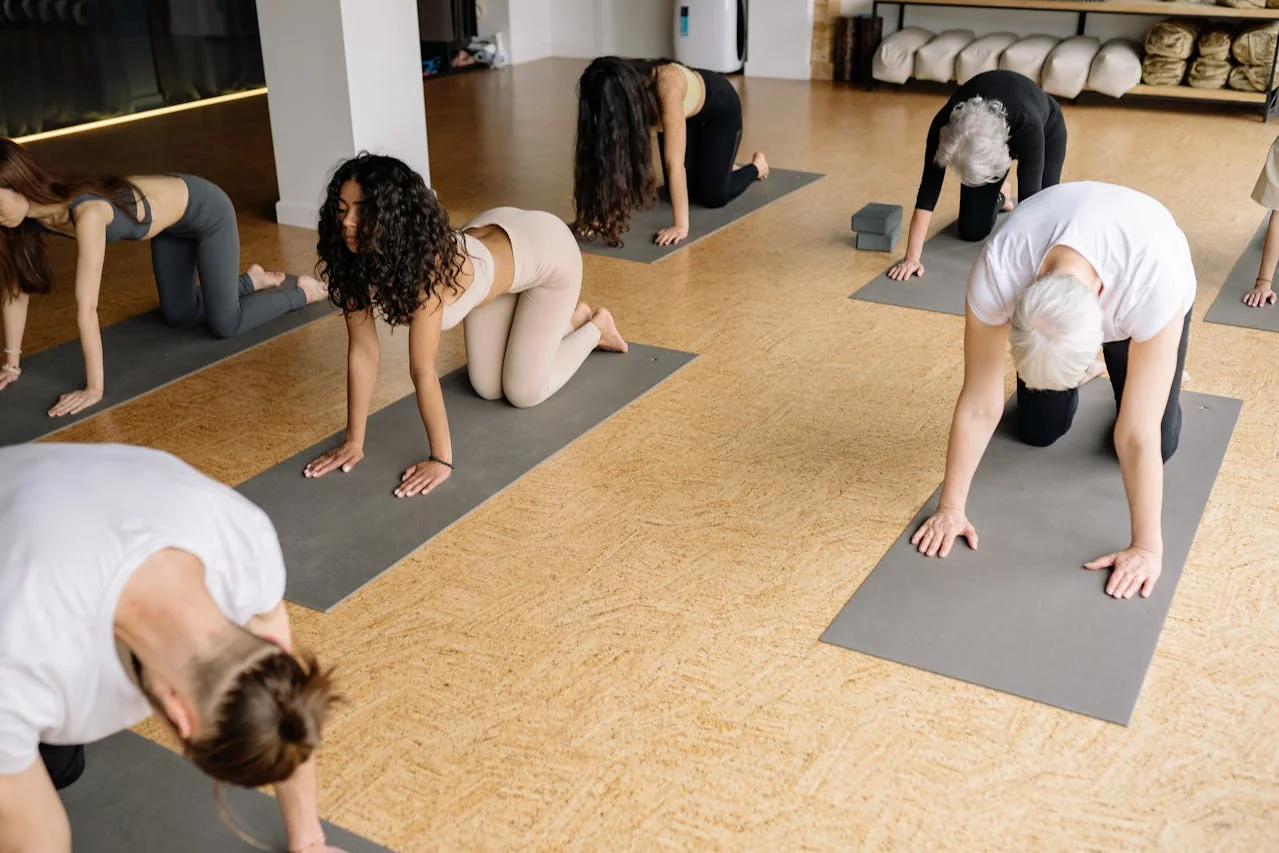
You’ve probably heard meditation can change your life—and honestly, that sounds pretty intimidating when you can barely sit still for five minutes without checking your phone. Here’s the thing: meditation isn’t about achieving some zen master state where you levitate cross-legged while humming ancient mantras. It’s simpler than that, and way more practical. The key is finding the right technique that actually clicks with your brain, your schedule, and yes—even your restless, overthinking mind that’s already wondering what comes next.
Breath Awareness Meditation
Why does something as simple as breathing—an action you’ve performed millions of times without conscious thought—suddenly feel impossible the moment someone tells you to “just focus on your breath“? You’re not broken; you’ve just discovered the paradox every meditator faces.
Breath awareness meditation transforms this automatic function into your anchor for presence and control.
Start with just three minutes—seriously, that’s shorter than most TikToks. Sit comfortably, close your eyes, and notice your natural breathing rhythm without changing it. When your mind inevitably wanders (mine goes straight to my grocery list), gently redirect attention back to your breath. This isn’t failure; it’s the actual practice. Each return strengthens your mental discipline, building the focused awareness that translates into real-world power and decision-making clarity.
Body Scan Meditation
Your body holds tension in places you didn’t even know existed—that weird knot between your shoulder blades, the tightness around your jaw you’ve been carrying since Tuesday’s meeting, the way your left foot somehow feels different from your right. Body scan meditation gives you the power to reclaim control over these physical sensations, transforming you from a passive victim of stress into an active detective of your own experience.
Start at your toes, spending 10-15 seconds noticing each body part. Don’t try to change anything—just observe like a curious scientist. Notice temperature, pressure, tingling, or complete numbness. Move systematically upward: legs, torso, arms, neck, face. End by sensing your whole body as one connected unit.
Research shows this practice reduces cortisol levels while increasing body awareness—basically giving you superpowers over stress.
Mindful Walking

Body scan meditation works wonderfully when you’re lying still, but let’s be honest—most of your waking hours involve movement, whether you’re rushing to catch the bus, pacing during phone calls, or doing that weird shuffle-walk when you’re trying to balance your coffee, keys, and phone all at once.
Mindful walking transforms your everyday locomotion into a powerful meditation practice. You’ll focus on each step’s sensation: the heel touching ground, weight shifting forward, toes pushing off. Start with slow, deliberate movements—think zombie-walk pace, but with intention rather than brain-craving urgency.
Research shows walking meditation activates the same neural pathways as seated practice while boosting creativity by 60%. You’re literally rewiring your brain while moving toward your goals—talk about multitasking mastery.
Loving-Kindness Meditation
What happens when meditation meets the ultimate act of rebellion against our inner critic? You discover loving-kindness meditation—a practice that transforms your relationship with yourself and others through intentional compassion. This isn’t just feel-good fluff; research shows it literally rewires your brain’s empathy circuits.
Start with yourself: “May I be happy, may I be healthy, may I be at peace”
Extend wishes to loved ones using the same phrases
Include neutral people—that barista you barely notice
Gradually embrace difficult people (yes, even your annoying coworker)
Finally, send compassion to all beings everywhere
I’ll admit, wishing happiness for people who’ve wronged you feels weird initially. But here’s the thing: you’re not excusing their behavior—you’re freeing yourself from resentment’s prison.
Guided Visualization

When your mind feels like a browser with forty-seven tabs open—most of them frozen, some playing mystery music—guided visualization becomes your mental ctrl+alt+delete. This technique harnesses your brain’s inability to distinguish between vividly imagined experiences and real ones: neuroscientists call this “embodied cognition,” and it’s why your mouth waters thinking about pizza.
You’ll follow a narrator’s voice through detailed scenarios—walking through peaceful forests, ascending mountain peaks, or floating in calm oceans. Stanford researchers found that guided imagery activates the same neural networks as actual experiences, fundamentally giving you a mental vacation without the overpriced airport snacks.
Start with ten-minute sessions using apps like Insight Timer or Headspace. Close your eyes, surrender control to the guide, and let your imagination transform stress into serenity—no technical skills required.
Mantra Meditation
Sometimes the most powerful meditation tool is simply a word or phrase repeated like your favorite song on mental loop—except this time, the repetition actually improves your day instead of driving everyone around you slightly insane. Mantra meditation harnesses your brain’s natural tendency to focus on repetitive sounds, creating what researchers call “cognitive anchoring”—basically giving your scattered thoughts something solid to grab onto.
Choose mantras that resonate with your goals:
- “I am calm” for stress relief
- “Om” for traditional grounding
- “Peace” for emotional balance
- “Strong” for confidence building
- “Present” for mindfulness focus
Start with five-minute sessions, silently repeating your chosen phrase while breathing naturally. When your mind wanders—and it will—gently return to your mantra without judgment.
Progressive Muscle Relaxation
While your mind might be the star of most meditation practices, your body has been quietly holding tension in places you didn’t even know existed—like that spot between your shoulder blades that’s been clenched since 2019. Progressive muscle relaxation (PMR) gives you the power to systematically hunt down and release that stubborn tension, one muscle group at a time.
You’ll start by tensing specific muscles for five seconds—your fists, shoulders, face—then releasing completely. This contrast teaches your body what true relaxation feels like, which honestly might be shocking if you’ve been wearing stress like armor. Research shows PMR reduces cortisol levels by 68%, making it particularly effective for anxiety-prone minds that struggle with traditional meditation.
Counting Meditation
If your mind treats silence like a personal invitation to replay every embarrassing moment from middle school, counting meditation offers the perfect mental training wheels for developing focus. You’ll harness your brain’s natural pattern-recognition abilities—turning numbers into anchors that keep you grounded in the present moment.
Start with counting breaths from 1 to 10, then repeat the cycle. When your mind wanders (it will), simply return to 1 without judgment. Count on the exhale for deeper relaxation, or inhale for energy. Use visualization—imagine numbers appearing in your mind’s eye. Progress to longer sequences once you’ve mastered the basics.
Research shows counting meditation increases concentration within just eight weeks. You’re literally rewiring your brain’s attention circuits, building the mental muscle that’ll serve you in boardrooms and beyond.
Mindful Eating

Why should meditation be confined to cushions and silence when your kitchen table offers one of the most accessible—and delicious—training grounds for mindfulness? Mindful eating transforms ordinary meals into meditation sessions, giving you the power to break free from mindless consumption patterns that drain your energy and focus.
Start with one bite: notice the texture, temperature, and flavors dancing across your tongue. Chew slowly—research shows people who eat mindfully consume 40% fewer calories while feeling more satisfied. Put your fork down between bites, breathe, and actually taste your food instead of inhaling it like I used to during my corporate lunch breaks. This practice builds the same awareness muscles you’ll use in other meditation techniques, proving that mindfulness isn’t about perfection—it’s about presence.
Movement Meditation
Breaking free from the meditation cushion doesn’t mean abandoning your practice—it means discovering that your entire body can become a gateway to mindfulness through movement meditation.
You’re literally turning your body into a meditation lab where every step, stretch, and gesture becomes your anchor to the present moment. Research shows that movement meditation activates different neural pathways than seated practice, giving you a powerful alternative when sitting still feels impossible—trust me, we’ve all been there.
Here’s how to harness movement as your meditation vehicle:
- Walking meditation: Focus on each footstep’s sensation, rhythm, and connection to the ground
- Tai chi or qigong: Practice slow, deliberate movements that synchronize breath with motion
- Yoga flows: Link breath to poses, creating moving meditation sequences
- Dance meditation: Move freely while maintaining awareness of your body’s impulses
- Mindful stretching: Pay attention to muscle tension, release, and the space between movements
Five-Minute Daily Practice
Whether you’re grounding yourself through mindful walking or flowing through gentle stretches, the real magic happens when you commit to showing up consistently—and that’s where a five-minute daily practice becomes your meditation game-changer.
Research shows that just five minutes of daily meditation can reduce cortisol levels by 23% within eight weeks—pretty powerful stuff for less time than it takes to scroll through social media (trust me, I’ve timed both).
Pick the same time each day, whether it’s right after your morning coffee or before you check emails. Your brain craves routine, and this micro-habit will compound into something transformative faster than you’d expect.
Here’s the truth: you don’t need hour-long sessions to rewire your brain’s stress response.
Conclusion
You’ve got eleven solid techniques to explore—from breath awareness that’ll sharpen your focus to loving-kindness meditation that’ll soften those rough edges we all carry. Don’t feel pressured to master them all; even I still fidget during body scans sometimes. Pick one that sparks curiosity, commit to just five minutes daily, and watch how this simple practice ripples through your life in surprisingly profound ways.





Pingback: 12 Ideas Weekend Self Care Routines